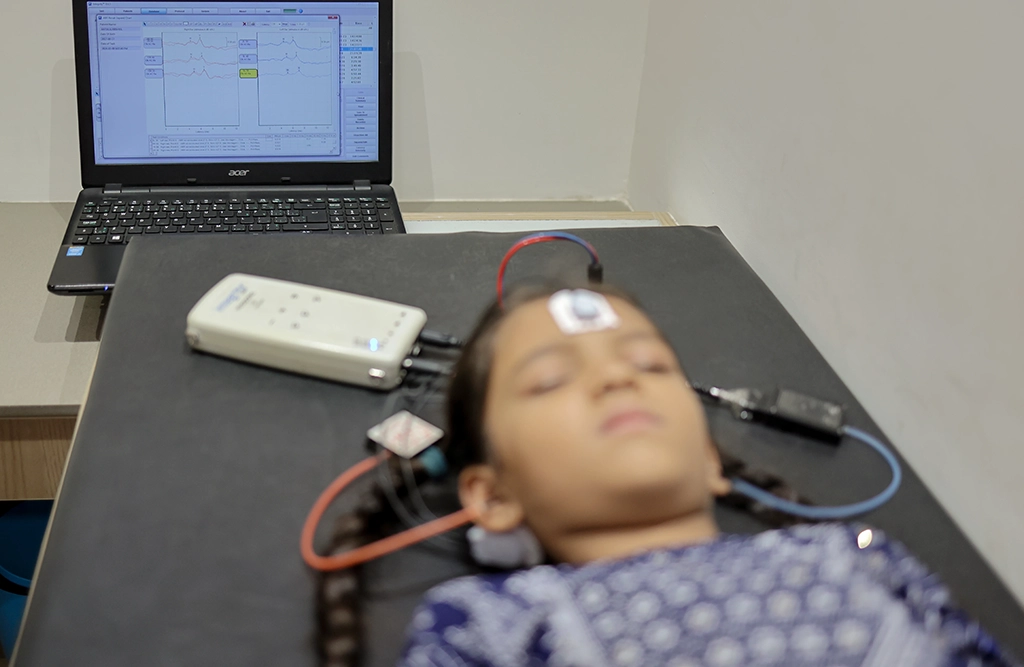
Electrophysiological testing might sound complex, but it’s actually a way to check how well your ears and brain are working together. It involves measuring the electrical activity in your ears and brain in response to sounds. This helps doctors understand if there are any issues with your hearing nerves or brain pathways. It’s painless and doesn’t require any effort on your part – you just need to sit back and relax while the tests are done. These tests can provide valuable information for diagnosing hearing problems and planning the best treatment for you.
Imagine your brain as the control center for everything you hear. When sound enters your ears, it travels along a pathway to your brain. The Auditory Brainstem Response (ABR) test helps doctors understand how well this pathway is working. During the test, small sensors are placed on your head and ears, and you listen to sounds through headphones. These sensors pick up signals from your brain in response to the sounds. By analyzing these signals, doctors can learn if there are any issues along the pathway, like hearing loss or problems with the nerves connecting your ears to your brain. It’s a bit like checking the wiring in your house to make sure everything’s connected and working properly.
Electrocochleography, or ECochG for short, is a test used to check how well your inner ear is working. It’s a bit like taking a picture of your ear’s electrical activity. During the test, small sensors are placed on your head or behind your ear, and then soft sounds or clicks are played. These sensors pick up the signals that your inner ear sends to your brain in response to these sounds. By analyzing these signals, doctors can see if there are any problems with your inner ear, like hearing loss or other issues. It’s a painless and quick test that helps them understand what might be causing your hearing problems.
Auditory steady state response (ASSR) is a way to check how well your ears are working, especially for hearing sounds at different frequencies. It’s like giving your ears a little test to see if they can pick up on different pitches, like high or low notes in music. This test is helpful because it can give a clear picture of your hearing abilities across a range of frequencies, almost like looking at a picture with lots of colors instead of just one. It helps audiologists figure out if you have any hearing issues and how severe they might be, so they can recommend the best ways to help you hear better.